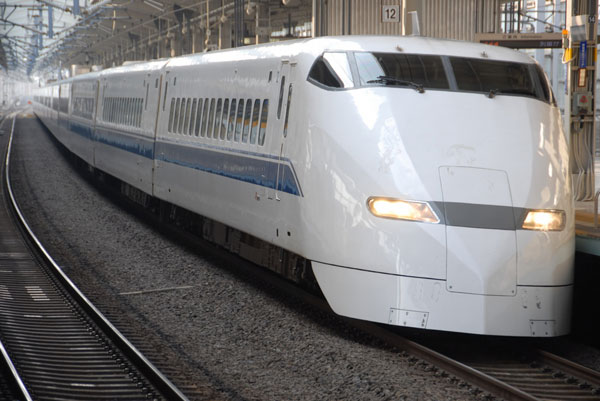Area residents remain concerned about the possibility of
thunderous noise emanating from the state’s high-speed rail
project, though spokespeople from the California High-Speed Rail
Authority said it won’t be as bad as some fear.
Area residents remain concerned about the possibility of thunderous noise emanating from the state’s high-speed rail project, though spokespeople from the California High-Speed Rail Authority said it won’t be as bad as some fear.
Other concerns raised at an HSRA meeting Wednesday about the bullet train, which is slated to zoom through the region at speeds up to 220 mph when it is expected to reach operation in 2020, include the potentially imposing visual impact of the train that will pass on an elevated track in some areas, how much electricity the 800-mile passenger system will consume and what effect it might have on open space.
The HSRA is currently in the process of conducting an extensive noise study to determine how loud the train will be, according to consultant and engineer Areg Gharabegian. He said the study will consider the best ways to mitigate the noise with sound walls and noise-absorbing materials along the track.
“We will identify all the noise-sensitive areas along the alignment,” Gharabegian said.
The high-speed train will generate different kinds of noise, the loudest of which will be the “turbulence” created by aerodynamics, Gharabegian explained. The train’s noise will dampen the further one is from the track, and the slower the train goes the quieter it will be.
On average, HSRA staff think the train at its top speed of 220 mph will average about 85 decibels at 50 feet from the track – louder than a noisy downtown big-city background – and about 70 decibels at 450 feet from the track – about as loud as a “very noisy” urban residential area.
Each train will be heard for about four seconds as it passes through town, compared to up to one minute it takes for an Amtrak or Caltrain vessel to pass out of earshot, HSRA consultants said. At peak hours when the train system reaches full capacity in 2035, up to 20 trains per hour will pass through Morgan Hill, according to consultant Gary Kennerley.
It would not be as noisy as BART commuter trains, and the high-speed train will not require a loud horn such as is currently used on Union Pacific tracks because the track will be “grade separated” from intersecting roads and railroad tracks, Gharabegian said.
“It will be much quieter than Caltrain with a horn,” he said.
Several months remain before HSRA officials give an inkling which of two main alignment possibilities through Morgan Hill they prefer. By 2020, the $45-billion high-speed rail project will have routes from San Diego to Sacramento and to the Bay Area, eventually carrying passengers from San Francisco to Los Angeles in less than three hours.
A 123-mile stretch from Merced to San Jose would run through the Pacheco Pass with a proposed station in Gilroy.
The project is currently in the environmental study phase. An “alternative alignment analysis” will be completed by HSRA officials by May, and the first draft of the full EIR is expected to be done by the first half of 2012. Construction won’t begin before 2013.
Two alignments currently under consideration include one along the east side of U.S. 101, over the city’s Outdoor Sports Complex along an elevated track. The other possibility goes along the east side of the existing Union-Pacific railroad tracks, transitioning from at-grade to an elevated track along the western side of Butterfield Boulevard.
The latter route would require the closure of Tilton Avenue at Monterey Road, and both would necessitate improvements at major vehicle intersections in order to bring cars above or under the high-speed tracks.
Some residents at the meeting Wednesday thought some of the information presented by the HSRA, which included a discussion of how the authority will evaluate and mitigate the system’s visual impact, was “rosy and optimistic,” but offers no guarantee and no mid- to worst-case scenario. Morgan Hill resident Bev Mercurio hoped more people would show up to Wednesday’s meeting. About 60 people attended.
“There’s a lot of people who will be impacted by this,” Mercurio said.
The first full-fledged attempt to build a high-speed train in the U.S. has made local lawmakers and residents wary of the unknown. Morgan Hill city councilman Rich Constantine, who attended Wednesday’s meeting, examined giant topographical maps of the proposed routes on display and mentioned his concern with the downtown route.
“An elevated track will have the tendency to split Morgan Hill,” Constantine said.










